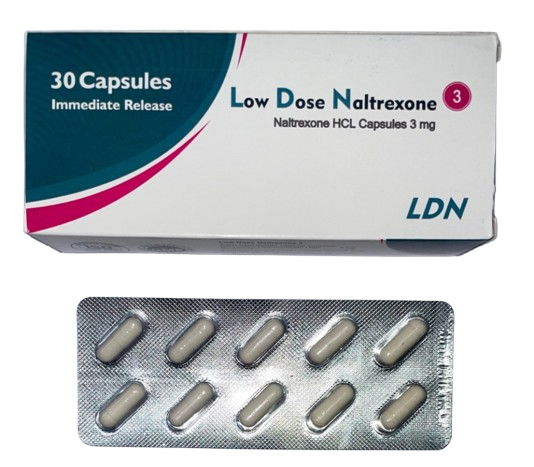
What is LDN
Low-dose naltrexone is a prescription therapy used off label to support symptoms related to immune imbalance, chronic pain and some neurologic conditions. Standard naltrexone is a 50 mg opioid-receptor blocker approved for addiction treatment. In low doses (about 1–5 mg) it appears to have different, paradoxical effects that may modulate inflammation, support endogenous endorphins and help with pain. Results vary based on your history and plan.
How LDN may help
- Calms overactive immune activity and inflammatory signaling
- Supports the body’s own endorphin system which can improve pain tolerance and mood
- May reduce central sensitization and “amplified pain” patterns seen in some chronic conditions
Who might be a candidate
LDN is discussed as part of a comprehensive plan for select patients with:
- Autoimmune conditions such as Hashimoto’s thyroiditis, multiple sclerosis, rheumatoid arthritis, Crohn’s disease, ulcerative colitis or lupus
- Chronic pain and central nervous system conditions such as fibromyalgia, chronic fatigue syndrome or Parkinson’s disease
- Cognitive concerns related to neuroinflammation
- Other complex inflammatory conditions on a case-by-case basis
Note: Use for the above is off label. We individualize recommendations after a full intake, exam and review of labs.
Dosing and how we prescribe
- Typical range: 1.5–5 mg by mouth in the evening
- Timing: take between 9 pm and 3 am to create a brief receptor “blockade” that peaks around 2–4 am which may stimulate a beneficial endorphin response
- Release form: immediate-release only. We avoid slow-release since it can blunt the intended effect
- Titration: we usually start low and increase gradually to improve tolerance
- Compounding details: prescriptions are filled through reputable compounding pharmacies
Safety, side effects and interactions
Most patients tolerate LDN well.
Common and usually temporary
- Vivid dreams, light nausea or headache, often improving with dose timing or slower titration
Important precautions
- Do not combine with opioid pain medicines. A 7-day washout from short-acting opioids is recommended before starting LDN
- Caution if you have significant liver disease. The historical liver warnings come from very high naltrexone doses (≈300 mg), not low-dose use
- Patients with organ transplants or on immunosuppressive medications should avoid LDN unless cleared by their specialist
LDN should be managed by a clinician who can monitor response, adjust dose and coordinate with your other medications.
Our approach
At Glendale Whole Health, we use LDN when it fits your goals and biology, not as a stand-alone fix. Your plan may include nutrition, gut and hormone support, targeted supplements and gentle movement therapy alongside LDN to address root drivers of inflammation.
FAQ
Is LDN FDA-approved for these conditions?
No. Naltrexone is FDA-approved at 50 mg for addiction treatment. Low-dose use for immune and pain modulation is off label.
How long until I notice benefits?
Some patients see changes in sleep or pain within 2–4 weeks while others need several weeks of careful titration. We set clear checkpoints to assess progress and decide next steps.
Can I take LDN if I have to use pain medication?
Not if the medication is an opioid. We will discuss non-opioid options or coordinate with your prescribing physician if a transition is appropriate.
Learn more
Want to learn more about how LDN works?
📄 Download our LDN Fact Sheet (PDF)
Ready to talk about LDN
If you think LDN could be a fit, call (818) 551-0464 or request an appointment online. We’ll review your history, medications and goals then design a personalized plan.
